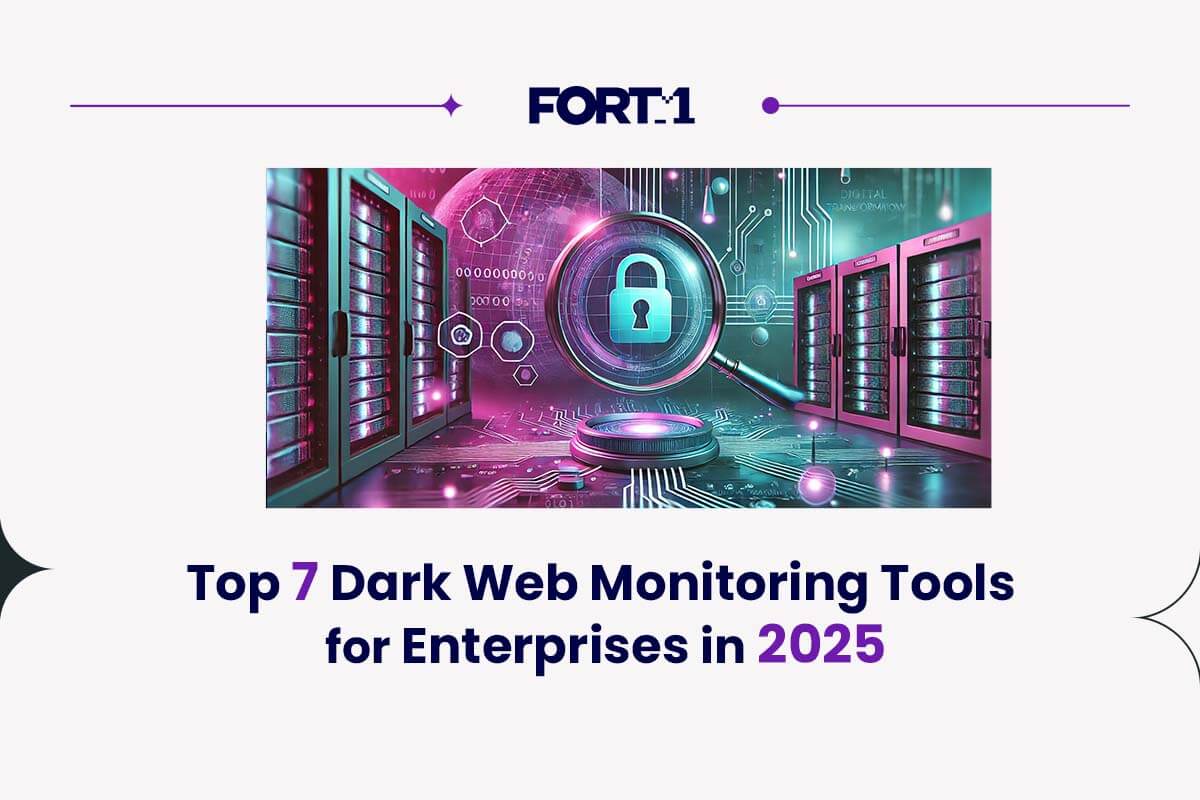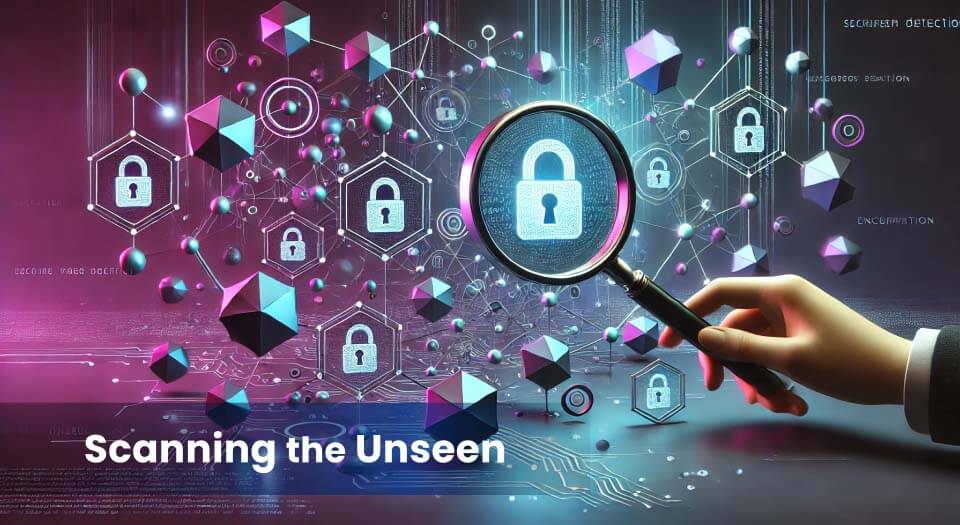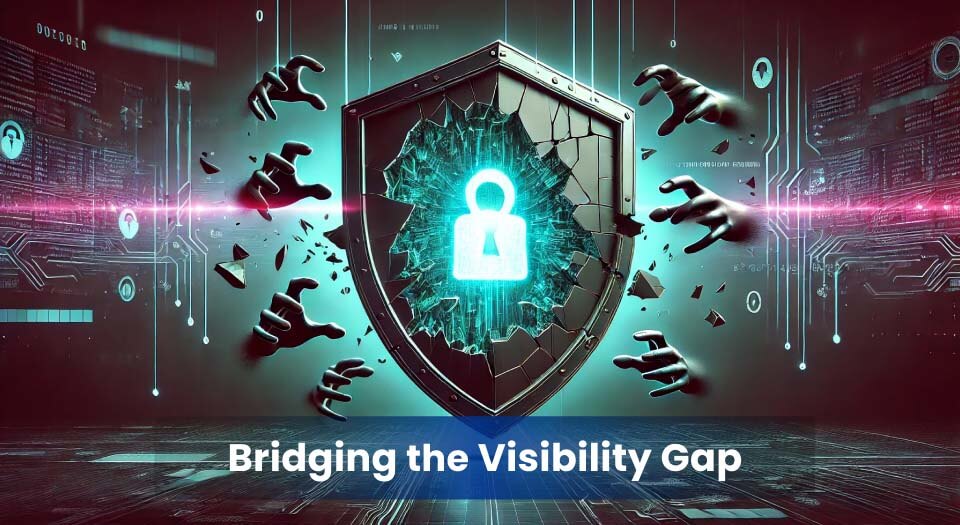




Dark web monitoring tools have become a critical component of enterprise cybersecurity strategies in 2025, particularly as threat actors grow more organised and capable of operating in hidden digital environments. From stolen credentials to sensitive corporate data, vast amounts of exploitable information are traded across unindexed darknet marketplaces and forums. Without the ability to monitor this activity, organisations risk undetected exposure, reputational harm, and regulatory penalties.
Unlike traditional perimeter defences, dark web monitoring enables early detection of targeted risks by scanning for compromised assets beyond the visible web. It provides crucial insight into emerging attack vectors, leaked credentials, and impersonation attempts—allowing security teams to act swiftly before damage occurs.
This article introduces the top seven dark web monitoring tools for enterprises in 2025, comparing their features, integration capabilities, and relevance for large organisations. Whether operating in finance, healthcare, or infrastructure, decision-makers need visibility into the dark web to maintain a proactive and compliant security posture.

Dark web monitoring tools are specialised cybersecurity solutions designed to detect and alert organisations to threats emerging from unindexed and encrypted networks such as the dark web. These tools scan hidden marketplaces, data dumps, criminal forums, and other illicit sources for indicators of compromise—such as leaked credentials, personal data, intellectual property, or mentions of an organisation’s digital assets.
Unlike surface web search engines, dark web monitoring tools operate within anonymised environments using technologies that safely access .onion domains without exposing the organisation’s infrastructure. Most enterprise-grade platforms offer automated threat detection, real-time alerts, integration with SIEM systems, and actionable intelligence reporting.
For example, tools may flag the sale of stolen email-password combinations, counterfeit brand usage, or early chatter about targeted attacks. This visibility empowers incident response teams to take pre-emptive action, such as resetting credentials, engaging law enforcement, or enhancing endpoint protections.
As the boundaries between internal systems and external risks blur, organisations can no longer afford to ignore threats originating beyond the traditional web. Monitoring the dark web is not merely a tactical choice—it’s a foundational element of strategic cyber risk management.
📌 Reference: NCSC – Dark Web Guidance

As cybercriminal tactics evolve in scale and sophistication, organisations face increased risk of data leaks, brand impersonation, and intellectual property theft—all of which frequently originate on the dark web. In this landscape, dark web monitoring tools have shifted from optional add-ons to essential components of enterprise cyber resilience.
Modern attackers target not only corporate networks but also employees, partners, and digital supply chains. Stolen credentials, phishing kits, and cloned brand websites are often shared or sold on darknet platforms before any breach becomes public. Without continuous monitoring, enterprises may remain unaware of such exposure until reputational or regulatory damage has already occurred.
In 2025, compliance requirements under frameworks such as ISO 27001:2022, the Australian Privacy Principles (APPs), and APRA CPS 234 place greater responsibility on organisations to detect, respond to, and mitigate emerging threats proactively. Monitoring the dark web aligns with these obligations by offering early visibility into risks that traditional defences overlook.
Therefore, the ability to track potential threats on the dark web has become a non-negotiable element of enterprise risk management. Organisations that implement these tools gain not only situational awareness—but also a strategic advantage in anticipating and mitigating cyber threats before they escalate.
Dark web monitoring tools offer enterprise-grade visibility into hidden cyber threats, exposed data, and malicious activity that would otherwise remain undetected. In 2025, these tools are essential for security teams aiming to pre-empt breaches, monitor brand abuse, and meet compliance standards.
Below is an overview of seven leading solutions for enterprise use:
Darktrace PREVENT leverages AI to identify vulnerabilities before they’re exploited. Its dark web intelligence module scans for leaked credentials and maps potential attack paths based on threat actor behaviour.
Key Features:
Best For: Predictive threat visibility
Limitations: High pricing, may overwhelm small SOCs
Cyble Vision offers real-time monitoring across forums, marketplaces, and encrypted platforms. It specialises in credential and identity protection.
Key Features:
Best For: Identity protection and executive monitoring
Limitations: Learning curve for advanced configuration
SpyCloud focuses on breach recovery and password reuse detection. It indexes billions of records from breaches to alert on account takeover threats.
Key Features:
Best For: Account takeover prevention
Limitations: Less emphasis on deep/dark forum chatter
Recorded Future combines threat intelligence feeds with dark web insights, focusing on adversary infrastructure tracking.
Key Features:
Best For: Government & large enterprise SOCs
Limitations: Premium pricing
Constella offers personal and executive protection features, including social media and darknet identity surveillance.
Key Features:
Best For: Executive and identity risk
Limitations: Limited asset scanning depth
Digital Shadows provides continuous monitoring, alerting, and takedown support. It’s widely used by enterprises for detecting phishing domains and brand abuse.
Key Features:
Best For: Brand protection and fraud prevention
Limitations: Can be expensive for SMEs
Cybernod ThreatView is an Australian-built dark web monitoring tool tailored to enterprise and SME compliance. It offers real-time scanning, ISO-aligned reporting, and native integration with Microsoft 365 and Google Workspace.
Key Features:
Best For: Australian SMEs and compliance-driven industries
Limitations: Currently available only for ANZ-based organisations
| Tool | Best For | Key Feature | Integration | Compliance |
|---|---|---|---|---|
| Darktrace PREVENT | AI-based threat prediction | Attacker path mapping | XDR, SIEM | ISO 27001 |
| Cyble Vision | Credential monitoring | Real-time threat feed | Custom API | GDPR |
| SpyCloud | Account takeover alerts | Password reuse detection | IAM, SSO | NIST SP 800-53 |
| Cybernod ThreatView | SME compliance in Australia | Encrypted scanning, ISO reports | Microsoft 365, Google | ISO 27001, OAIC |
Darktrace PREVENT offers an AI-driven approach to dark web monitoring, enabling enterprises to anticipate cyber threats before they materialise. By mapping potential attack paths and scanning darknet sources for leaked credentials and insider chatter, the tool enhances situational awareness within SOC environments. Its integration with SIEM and XDR solutions makes it suitable for large organisations seeking predictive insights. However, due to its complexity and cost, it may exceed the operational capacity of smaller security teams.
Cyble Vision provides real-time visibility into underground marketplaces, encrypted messaging platforms, and illicit forums. Its automated threat feed and custom watchlist features make it ideal for organisations focused on credential protection and identity monitoring. The platform supports integration via API and offers executive-level digital risk detection. While it is powerful, its configuration dashboard may present a learning curve for teams unfamiliar with advanced customisation.
SpyCloud’s enterprise solution is purpose-built for account takeover prevention, drawing from one of the largest databases of exposed credentials. It integrates easily with IAM platforms and helps organisations detect password reuse before attackers exploit it. This solution is especially effective for finance and technology sectors where credential abuse is a leading threat. However, it offers limited coverage of deep web discussions and lacks broad adversary infrastructure analysis.
Recorded Future combines threat intelligence with dark web monitoring by indexing structured and unstructured threat data from multiple languages and sources. Its strength lies in adversary infrastructure tracking and its ability to deliver high-confidence alerts through analyst-vetted feeds. It’s a preferred choice for government agencies and multinational corporations. That said, its pricing model and feature set may be excessive for mid-sized enterprises seeking leaner options.
Constella Intelligence focuses on identity-centric monitoring, offering protection for executives, employees, and their families across dark web and social platforms. The platform alerts on identity leaks, impersonation attempts, and credential exposure, and includes guidance for digital risk mitigation. Its strength lies in digital risk protection rather than deep technical threat intelligence, making it ideal for companies with a public-facing executive team. However, it lacks extensive asset scanning compared to threat-centric platforms.
Digital Shadows provides comprehensive coverage of digital risks through dark web scanning, alerting, and remediation support. Its standout feature is automated takedown requests for impersonation and phishing sites, combined with a clear, analyst-friendly interface. The tool is highly regarded for brand protection and third-party risk monitoring. While it offers deep intelligence capabilities, it may be cost-prohibitive for small to mid-sized enterprises without dedicated cyber threat teams.
Cybernod ThreatView is tailored for Australian enterprises and SMEs that require secure, standards-aligned dark web monitoring. It offers encrypted scanning across darknet marketplaces, ISO 27001 and OAIC-compliant reporting, and native integrations with Microsoft 365 and Google Workspace. Designed to meet local regulatory requirements, it’s an ideal solution for compliance-driven industries such as healthcare, finance, and education. While its reach is growing, availability is currently limited to the ANZ region.
Step 1: Are you based in Australia and need compliance with ISO 27001 or OAIC?
Step 2: Is your primary concern preventing account takeover or password reuse?
Step 3: Do you need to monitor executive identity exposure or brand impersonation?
Step 4: Is your organisation seeking predictive threat intelligence through AI?
Selecting among the many dark web monitoring tools available in 2025 requires careful alignment with your organisation’s size, industry, risk profile, and regulatory obligations. While all enterprise tools aim to improve visibility into darknet threats, the value of each platform depends heavily on your specific environment and priorities.
For example, highly regulated sectors such as finance, healthcare, and legal services may prioritise solutions that offer audit-ready compliance reports, such as Cybernod ThreatView, which aligns with ISO 27001 and the Australian Privacy Principles. In contrast, multinational corporations managing diverse digital assets may benefit more from globally focused tools like Recorded Future or Digital Shadows, which provide broader language and geopolitical coverage.
Integration capabilities are also a key consideration. Organisations with existing SIEM or XDR infrastructure should seek tools that offer native or API-based integration, reducing response time and analyst fatigue. Likewise, the precision of alerting mechanisms matters—tools that generate excessive false positives can overwhelm response teams, undermining operational efficiency.
Ultimately, the best dark web monitoring tool is one that supports your business objectives while strengthening your incident detection and response strategy. Prioritise flexibility, reliability, and compliance-readiness to ensure a sustainable investment in cyber resilience.
For enterprises evaluating dark web monitoring tools, regulatory compliance, data privacy, and seamless integration are critical considerations—especially in jurisdictions like Australia, where data protection frameworks continue to evolve. Under the Australian Privacy Principles (APPs), the Notifiable Data Breaches scheme, and standards such as ISO 27001:2022 and APRA CPS 234, organisations must demonstrate proactive measures to detect and mitigate security threats, including those originating from the dark web.
A compliant dark web monitoring solution should ensure encrypted transmission of data, secure storage, and non-invasive scanning mechanisms that do not breach legal boundaries. It is also important to confirm whether the tool stores scanned data onshore (within Australia), which may be required for sensitive industries such as healthcare or government contracting.
Integration is another essential factor. Tools that offer built-in connectors for popular SIEMs (like Splunk, Microsoft Sentinel, or IBM QRadar) and SOC workflows enhance operational efficiency. Additionally, platforms with API access allow security teams to correlate dark web alerts with endpoint or network data, enabling faster triage and response.
Ultimately, a tool that cannot align with your compliance framework or integrate into your security stack risks becoming a liability rather than a defence asset.
📌 Reference: OAIC – Australian Privacy Principles

While no tool or technique can offer complete anonymity, there are several practices enterprises and cybersecurity professionals should follow when using dark web monitoring tools to minimise risk. Whether engaging in passive observation or structured threat intelligence gathering, maintaining operational privacy is essential.
First, avoid accessing the dark web directly through standard browsers or unsecured networks. Instead, use dedicated operating systems such as Tails OS or sandboxed environments that route traffic through anonymising layers like Tor. Disabling JavaScript, avoiding credential reuse, and refraining from downloading files from unknown sources can significantly reduce exposure.
For enterprise use, the best approach is to adopt trusted monitoring platforms rather than manual browsing. These tools offer encrypted access to dark web sources, filter malicious content, and maintain user anonymity while delivering actionable alerts. Platforms like Cybernod ThreatView, for example, scan underground forums and marketplaces in real time and deliver intelligence without requiring direct user interaction with illicit platforms.
Additionally, organisations should conduct a cybersecurity gap analysis before engaging in dark web monitoring to ensure there are no internal vulnerabilities that could be exploited during the process. Combining endpoint hardening, encrypted communication channels, and strict access control policies ensures privacy is preserved from both external and insider threats.
A layered, disciplined approach is the key to safe, private monitoring in dark environments.
As cyber threats grow more complex and decentralised, enterprises must look beyond traditional defences to secure their most valuable assets. Implementing dark web monitoring tools enables organisations to detect credential leaks, emerging attack vectors, and brand impersonation before they escalate into full-scale incidents.
Choosing a platform that aligns with your regulatory obligations, security infrastructure, and operational needs is essential. Whether your organisation prioritises AI-driven intelligence, identity protection, or standards-based compliance reporting, the right solution will enhance both visibility and resilience.
🔒 Fort1’s Cybernod ThreatView is designed specifically for Australian enterprises and SMEs—offering encrypted scanning, ISO 27001 and OAIC-aligned reporting, and seamless integration with Microsoft 365 and Google Workspace.
👉 To learn howFort1 ThreatView can support your cybersecurity roadmap, visit 📍 https://fort1.com.au

Fort1 provides comprehensive cybersecurity solutions tailored to protect your business from evolving digital threats. With expertise in penetration testing, dark web monitoring, and managed detection services, we empower organisations to stay secure and resilient in the face of modern cyber challenges.
Copyright @2024 Fort1. All Rights Reserved by Fort1.